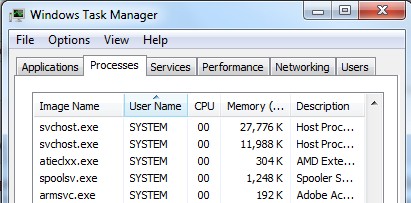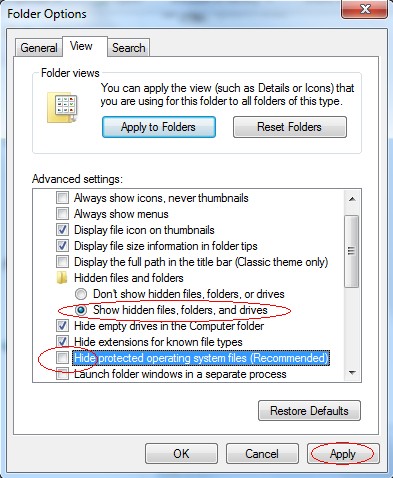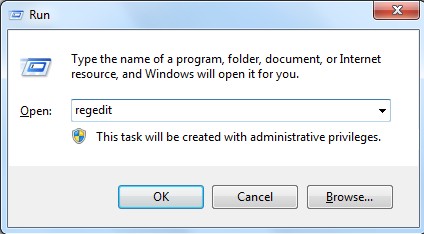Did you just get a pop up warning from your antivirus software saying your computer is under risk of a virus named Exploit:Win32/Pdfjsc.AU virus? Have you tried many different programs to remove the virus but all failed at last? Are you seeking for efficient ways to get rid of the virus in time? What can we do to wipe out the virus for the good of our computer?
Exploit:Win32/Pdfjsc.AU Trojan Virus Infection Detection
Apparently, Exploit:Win32/Pdfjsc.AU belongs to a Trojan virus infection. It’s said to come from the Exploit:Win32 family, which has many members and is creating more and more new ones all the time. According to many victims’ experience, this kind of Trojan virus often brings constant computer problems to the PC users and can cause personal information revealing. It is known to be released and spread recently. People are puzzled because though antivirus software is able to pick it up when the computer is infected by the Trojan they cannot delete it anyhow.
The infection of this Exploit:Win32/Pdfjsc.AU Trojan virus always results in the mistakes done by the computer users when they are on the internet. Any bad online habits such as opening links without knowing if they are safe to visit, installing free programs and transferring files from infected devices can cause the invasion of this Trojan virus. A Trojan is not like a malware which can be visibly seen as a program on your computer. The only way you can see it may be the antivirus detection or a strange process listed in Task Manager. You can’t go into Control Panel to uninstall this Trojan. And since antivirus programs can’t seem to catch it, there aren’t too many ways left behind.
Note: Manual Removal requires expertise and it is for advanced users, if you don’t have much experience in dealing with redirect virus.
Contact YooSecurity Online PC Experts for removal assistance.

Symptoms of Similar Trojan Infection :
– This virus can escape from most antivirus protection and get itself installed on computers especially with Windows operating systems.
– It can cause constant stuck or even blue screens on the infected computers.
– Computer users will experience constant security pop ups on the computers which may not truly represent the status of the PCs.
– Certain malware or spyware may be prompted by these fake security pop ups which will end up scamming money.
– Sensitive data like privacy can also be stolen and taken advantages by cyber criminals.
Manual Removal Step by Step Instructions
Up till now, there is not a perfect antivirus that can detect this pesky Trojan virus or delete it completely. Exploit:Win32/Pdfjsc.AU has been updated by remote and backstage cyber criminals and is able to escape from the scan of any anti-virus programs thus it is hard to be removed or even found. The most effective way is to remove it manually. The following instructions need quite level of computer expertise. If you don’t know how to that correctly, please contact with YooSecurity online support now!
Step A: Check on your start menu if there are any programs that you are not familiar with. The strange ones will often related to the virus process as it can start automatically with the windows. You can press on Windows key or just click on the start menu to view it. Please notice that you need to click on All Programs to have an overall check on it.

Step B: To remove the Trojan the first thing we need to do is to end its process thus we will not get the error message when we delete its files. To do that, open Windows Task Manager to end process related to this Trojan infection. You can press Ctrl+Alt+Del keys at the same time to pull up Window Task Manager; go to Processes tab on top and scroll down the list to find.

Step C: Always any virus files will be hidden files. So we need to show hidden files before we are going to delete them. Open Control Panel from Start menu and search for Folder Options (As an easy way you can open a folder and hold Alt key and tap on T, O key one by one and folder option window will pops up). Go to Folder Options window, under View tab, tick Show hidden files and folders and non-tick Hide protected operating system files (Recommended) and then click Apply and then hit OK.

After we can see hidden folders and files we can go to system files and delete the infected files. The path of the virus often can be found from the antivirus which detects it.

Step D: After we delete the virus files from system data we get to remove the registry of the virus from registry editor to prevent it from coming back. You can get Registry Editor by pressing Windows+R keys to pull up Run box and type in regedit to open Registry Editor.

The following is how Windows Registry Editor looks like.

Step E: Delete all these associated files and registry entries with this Trojan virus from Registry Editor. The registry files are listed randomly. Besides, you need to delete the infection files of the redirect virus from your system files to prevent it from coming back. Those files are named randomly also but may be different on different operating systems.
Video on How to Modify or Change Windows Registry Safely:
To Summarize Shortly:
It seems that Trojan virus such as this Exploit:Win32/Pdfjsc.AU virus, is not taken as serious as malware or spyware to many computer users. It’s not wise to leave any viruses in the system because any possible damages can arise with time passing by. Almost all viruses will make chaos in the system thus there will turn out more and more programs or functions on the infected computer don’t work. Result in the effect of the virus, computers will perform slowly and can send out random errors of not responding. Some programs will begin to crash out and later on the computer system may go into great problems such as blue screen from time to time or sudden restarting. It is highly recommended to solve any virus infections as quickly as you can.
Note: Have tried many methods but failed to get rid of this Trojan virus? If you have no clue, please contact YooSecurity Online Experts in time to save your computer.
Published by Tony Shepherd & last updated on May 18, 2014 11:37 pm













Leave a Reply
You must be logged in to post a comment.